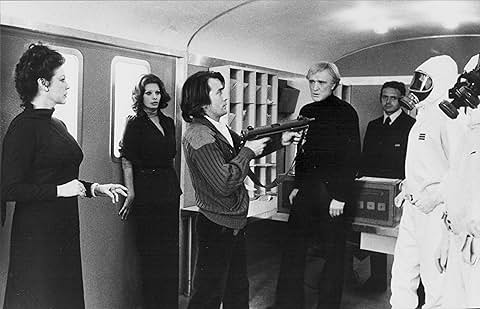readingcharlesdickens.com – “The Cassandra Crossing” is a 1976 disaster thriller film directed by George P. Cosmatos. Known for its star-studded cast and gripping storyline, the film blends elements of suspense, action, and drama, capturing the tense atmosphere of the 1970s disaster movie genre. With an intriguing plot centered around a deadly virus outbreak on a train, the movie offers both thrilling entertainment and a reflection on human fears of contagion and catastrophe.
Plot Overview
The film’s narrative kicks off with a dramatic scene at a Geneva-based International Health Organization conference, where a terrorist attack leads to the release of a deadly plague. The infected attacker flees and boards the Transcontinental Express, a passenger train traveling from Geneva to Stockholm. As the train speeds through Europe, it becomes a ticking time bomb carrying the deadly pathogen.
The Cassandra Crossing
The title refers to a derelict railway bridge, known as the Cassandra Crossing, located in Poland. As the virus spreads among passengers, Dr. Jonathan Chamberlain, played by Richard Harris, realizes the gravity of the situation. The authorities, led by Colonel Stephen Mackenzie (Burt Lancaster), face a moral dilemma: quarantine the train and risk numerous lives or redirect it across the unstable Cassandra Crossing, potentially leading to a catastrophic crash.
Character Dynamics and Themes
The film features a diverse ensemble cast, including Sophia Loren as Jennifer Rispoli Chamberlain, Ava Gardner as Nicole Dressler, and Martin Sheen as her young lover, Robby Navarro. The interactions among the characters highlight themes of survival, sacrifice, and the ethical challenges posed by crisis management. Dr. Chamberlain’s desperate attempts to find a solution contrast with the bureaucratic indifference and political maneuvering of the authorities.
Cinematic Style and Impact
“The Cassandra Crossing” employs a blend of suspenseful storytelling and dramatic cinematography to maintain tension throughout the film. The confined setting of the train amplifies the sense of claustrophobia and urgency, while the high-stakes plot keeps audiences on the edge of their seats. The film’s focus on a viral outbreak and its consequences resonates with contemporary audiences, reflecting societal anxieties about pandemics and the fragility of modern life.
Reception and Legacy
Upon its release, “The Cassandra Crossing” received mixed reviews from critics, with praise for its performances and thrilling sequences, but criticism for its melodramatic elements. Despite this, the film has gained a cult following for its engaging plot and depiction of disaster scenarios. It remains a notable entry in the disaster film genre, remembered for its tension-filled narrative and star-studded cast.
Conclusion
“The Cassandra Crossing” stands as a classic example of 1970s disaster cinema, combining a suspenseful plot with a commentary on human resilience and ethical dilemmas in the face of potential catastrophe. Its exploration of themes related to contagion and crisis management continues to captivate audiences, making it a memorable and thought-provoking film.
